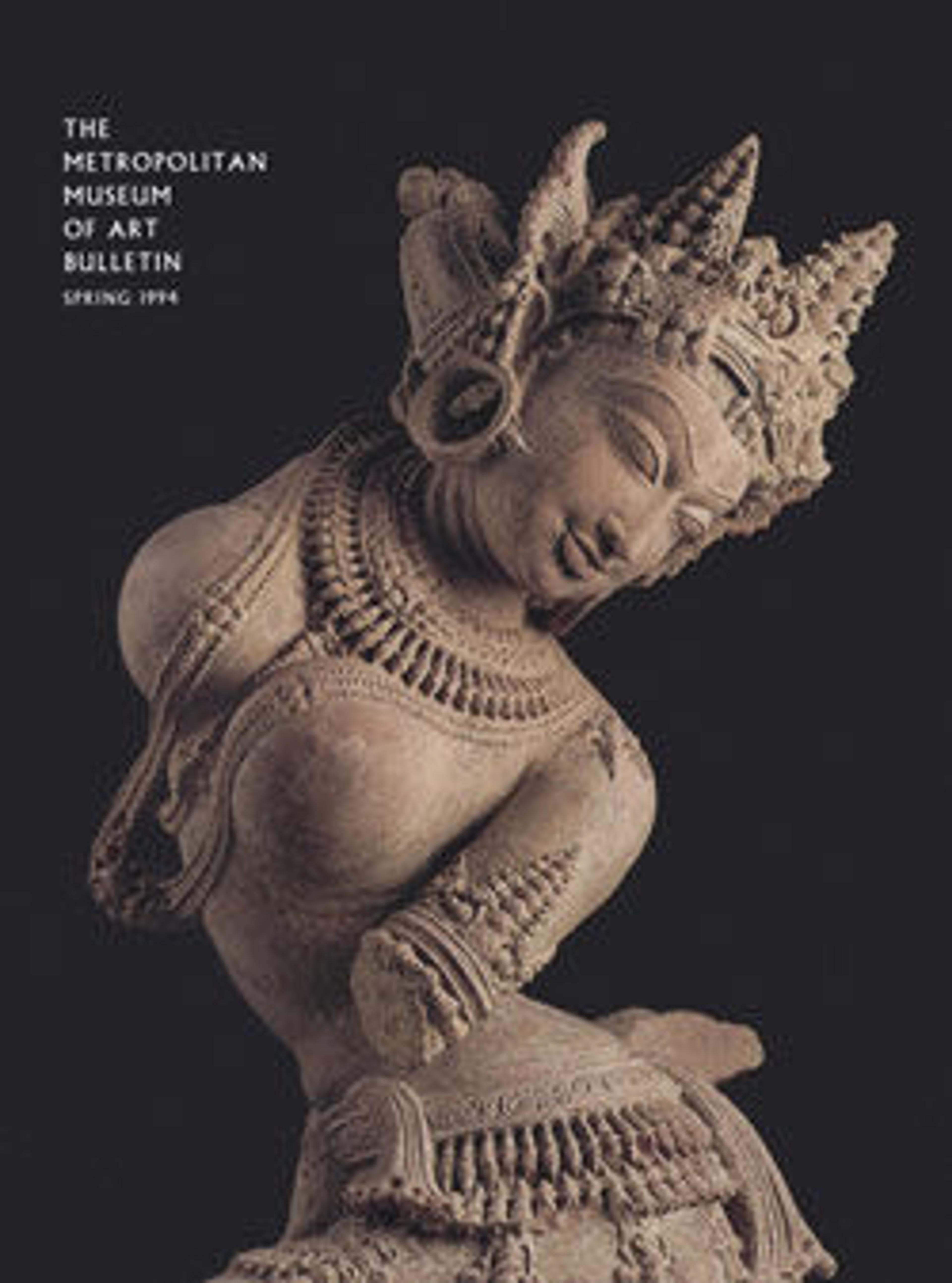Loving Couple (Mithuna)
Artwork Details
- Title:Loving Couple (Mithuna)
- Period:Eastern Ganga dynasty
- Date:13th century
- Culture:India (Orissa)
- Medium:Ferruginous stone
- Dimensions:H. 72 in. (182.9 cm)
- Classification:Sculpture
- Credit Line:Purchase, Florance Waterbury Bequest, 1970
- Object Number:1970.44
- Curatorial Department: Asian Art
Audio
7973. Loving Couple (Mithuna)
Gallery 241
This frankly erotic relief of a loving couple—ormithuna—graced a 13th-century Hindu temple. The lovers are frozen in the moment before they kiss. They gaze into each other’s eyes, as their bodies intertwine like vines. Notice the canopy of leaves shading this couple. Plant imagery usually refers to fertility. In itself, amithuna’s certainly a fertility symbol—and therefore an auspicious emblem. Hindus celebrate sexual pleasure as good in and of itself. Erotic temple sculptures also have a metaphorical meaning. This couple peels back the illusory barrier separating fleshly life and the divine. Erotic love is revealed as an earthly reflection of the soul’s yearning for god. Hindus practicing circumambulation—that is, walking around the outside of a temple—would have seen the artworks on the temple exterior as aids to instruction and meditation. Frequently, gods and holy figures were interspersed with mithunas and scenes of sexual ecstasy.
More Artwork
Research Resources
The Met provides unparalleled resources for research and welcomes an international community of students and scholars. The Met's Open Access API is where creators and researchers can connect to the The Met collection. Open Access data and public domain images are available for unrestricted commercial and noncommercial use without permission or fee.
To request images under copyright and other restrictions, please use this Image Request form.
Feedback
We continue to research and examine historical and cultural context for objects in The Met collection. If you have comments or questions about this object record, please contact us using the form below. The Museum looks forward to receiving your comments.
